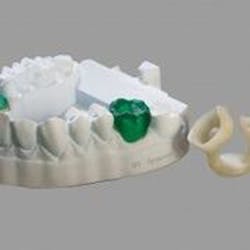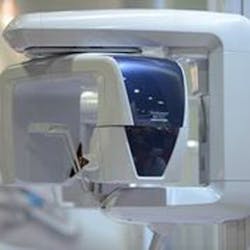High tech buzz words like digital dentistry, CAD/CAM, intraoral scanning, extraoral scanning, 3-D milling, and 3-D printing are reverberating throughout the dental industry. It seems whenever dental professionals get together it’s not long before at least one of these topics is discussed.
So it’s hardly a surprise that when close to 8,000 dental professionals from every aspect of the industry got together in Singapore in April for IDEM Singapore 2014, the exhibition halls were full of these topics. They were also discussed in many of the lectures, but perhaps they were most frequently in the lecture halls and break rooms of the Dental Technician Forum, one of three new tracks introduced to IDEM Singapore.
While everyone seems to agree that “the future is now,” there was also some ambivalence and trepidation toward the future that is knocking on the doors of Asia’s dental labs and surgeries. The question worrying some, especially the older and more established labs and technicians, is whether its arrival is sounding the death knell of the traditional, craftsmen-based prosthetics and restoration business, or heralding a boom that will see more demand in Asia’s developing economies?
The doomsday scenario in many technicians’ minds is that the advances in scanning technologies, coupled with more powerful and capable software, feeding virtual 3-D models to ever cheaper and more accurate 3-D printers, will mean dentists will be able to handle their own manufacturing needs.
Instead of making a mold and sending it to a lab for scanning, a well-equipped dentist can use a variety of technologies, from intraoral cameras to CBT, to scan teeth directly. The digitized scan can then be sent to an on-site milling or 3-D printing machine to carve the crown from a block of porcelain, or print it from resin while the patient relaxes in the waiting room. After a little finishing and preparation work, the crown is ready for fitting, and the satisfied patient is heading back to work.
This is a scenario that definitely appeals to patients — a single visit with no need to wander around with a temporary crown that offers them savings in both time and money. In theory it appeals to quite a few dentists too, as they see an opportunity to cut out the mold and the middleman — the poor technician. But is this yet reality?
The short answer is no. Any lab owners or technicians who have been losing sleep over the imminent loss of their livelihoods can relax. It’s not that CAD/CAM won’t revolutionize the industry, it is certainly already doing that and will continue to do so, but it is unlikely that it will do so in the hands of dentists.
While 3-D printing is still new, CAD/CAM is not. In Europe, the United Kingdom, and the United States, dentists have had access to the scanning technology, computer power, and even desktop milling machines for 20 years or more, but they have not adopted it en masse. Even in the U.S., the world’s largest and most technically advanced dental market, only something like 8% to 10% of dental surgeries have in-house CAD/CAM facilities.
It’s unlikely that the majority of dentists with 10 to 20 years before retirement will be willing to change to these new technologies. While they might be at the stage of their careers where they can afford it, they are usually put off by the daunting learning curve. As two of the world’s leading experts on the use of CAD/CAM in dentistry, the Italian dentist brothers Andrea and Alessandro Agnini pointed out during a lecture at IDEM Singapore that in their experience with intraoral scanning, most dentists with 20 or more years’ experience working with molds find it hard to switch and often prefer to stick with what they know — molds.
The latest generation of dentists and current dental students are more comfortable with digital technology, as the Doctors Agnini have found at their training facility in Italy. Student dentists who have no experience with either molds or 3-D scanning technologies prefer the latest methods, and the ability it gives them to work closely with technicians. However, while fresh graduates are comfortable with the latest scanning technology at the start of their careers, they are unlikely to have the capital to invest in in-house production facilities.
The Doctors Agnini can’t imagine a future without highly skilled, artist technicians helping them create the cutting-edge prosthodontics they are famous for. In their last lecture of IDEM Singapore, they assured the audience of technicians that as technology and materials advance and make more elaborate and complex restorations possible, the role of the expert artisan technician will become increasingly important in delivering the best possible outcome for patients.
Dr. Dobrina Mollova of the Centre for Advanced Professional Practices (CAPP) certainly does not think technology can replace skilled technicians,
“There will always be a need for technicians, for highly skilled professionals who are experts in the use of the machines that make the prosthodontics that modern dental practices rely on,” Dr. Mollova said. “The machines and technologies they use may change, but the need for experts to operate them will remain. So as long as technicians keep their skills and knowledge up to date, they will always be a vital part of the dental team.”
Dr. John Burgess, the Assistant Dean for Clinical Research at the University of Alabama, also believes digital dentistry and CAD/CAM represent a great opportunity for dental labs and technicians. He thinks this is a time of wonderful opportunity for Asian dentists and technicians, especially those in Southeast Asian countries with rapidly expanding middle classes, and a new generation of dentists and technicians coming on to cater to their needs. He believes that Southeast Asia may be in a position to leapfrog a generation or two of prosthodontic technologies to bring restoration work within the financial reach of a much larger market than has previously been possible.
So it seems the IDEM Singapore theme was on target with “The future is now,” and Asia’s dental labs and technicians need to embrace that future and make it their own.
John Battersby is a Senior PR Consultant specializing in medical, health and wellness, dentistry, and esthetic medicine. He is currently with Bridges M&C in Singapore, where he handles public relations for IDEM Singapore 2014.









